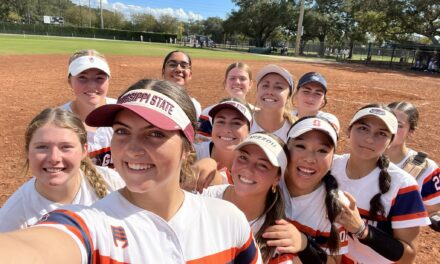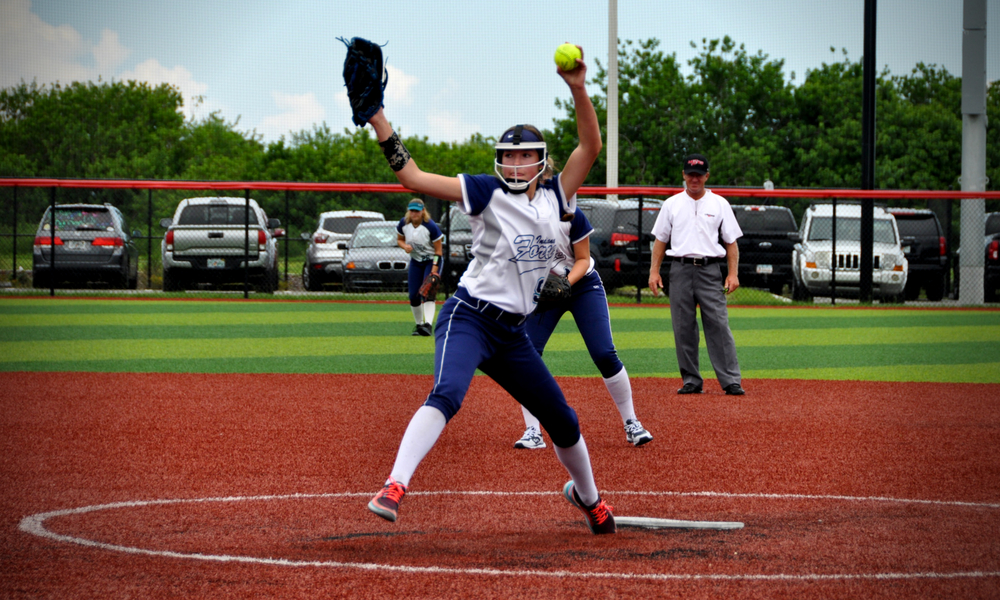The eternal question: Speed vs. Spin vs. Location. It’s a debate that has kept softball parents, coaches, and athletes awake at night, pondering which of these mystical forces is the true key to pitching success. Should we prioritize the power of raw velocity? Should we focus on the wicked movement that spin can generate? Or should we bow to the gods of precision and worship the ability to paint the corners with pinpoint accuracy?
Let’s start with a hard truth: Neither speed nor spin matters one bit if you can’t locate a pitch. That’s right, folks. You can throw 70 mph with a spin rate that makes the ball defy the laws of physics, but if it ends up in the parking lot, it’s not doing anyone any good—except maybe the windshield repair guy.
A camp of people swear by the “speed first” approach. These are usually the folks whose daughters came out of the womb throwing heat. For them, speed is king, and control is a secondary skill that can be “learned” later—preferably when their kid has already terrorized a few dozen batters with her blistering fastball.
Now, there’s some merit to this, sure. Speed can be intimidating. When a pitcher is firing bullets, it puts immediate pressure on the batter. But here’s the kicker: If that speed isn’t under control, it can quickly turn into a liability. Think of it this way: A pitcher who throws hard but has no idea where the ball is going is like a toddler with a permanent marker—dangerous, unpredictable, and likely to cause a mess.
Then some believe spin and location are the real keys to pitching prowess. These people probably have daughters who didn’t break the sound barrier with their first pitch, so they’ve learned to appreciate the game’s art. For them, it’s all about making the ball dance and keeping hitters off balance with precision placement.
Again, there’s validity here. A well-placed pitch with nasty spin can be just as effective—if not more so—than pure speed. But let’s not forget that spin, while awesome, can also lead to heartbreak if not wielded properly. A pitcher with amazing spin who “hangs” a pitch or misses her spot by a few inches might as well hand the batter a tee and say, “Here, have a free hit on me.”
Here’s a novel idea: How about we teach foundational and fundamental skills first and then see what kind of pitcher emerges? Maybe, just maybe, instead of pigeonholing pitchers into one category or another, we could focus on mechanics and fundamentals—things like proper body position, arm circle, release point, and snap.
Once those basics are nailed down, we can determine if a pitcher is more of a flamethrower, a spin queen, a precision artist, or all of the above. And here’s the kicker—no matter what type of pitcher she becomes, she’ll need to locate her pitches. That’s the one universal truth in all of this. If you can’t put the ball where you want it, you’re in for a long, frustrating career.
Let’s talk about the latest craze sweeping the softball nation: velocity. Nowadays, every other post on the interwebs seems to feature a pitcher proudly holding up a Pocket Radar, flashing her new personal record (PR).
Don’t get us wrong; we love seeing athletes hit their goals. But the emphasis on “Velo” has become almost comical. We get it—throwing hard is cool. But let’s not lose sight of the fact that velocity, while impressive, is just one piece of the puzzle.
As with anything in life, balance is crucial. Ask yourself this: Can you consistently make a batter miss or avoid getting hit hard? That’s the real measure of a successful pitcher, not just the number on the radar gun.
Recently, we attended a DI ID camp at a college. During the live gameplay portion, one pitcher clearly threw the hardest, 3-5 mph faster than anyone else. Her warm-ups were great, but when the game started, she walked four batters and hit two. Meanwhile, pitchers with great spin rates missed their spots, hanging pitches in the strike zone. Both types of pitchers had their strengths, but their inconsistencies stemmed from the same root cause: shaky mechanics.
So, what’s the takeaway here? Speed, spin, and location are all important, but they are nothing without a solid foundation of mechanics and fundamentals. The sooner we stop arguing about which is better and start focusing on building well-rounded pitchers, the better off we’ll be.








